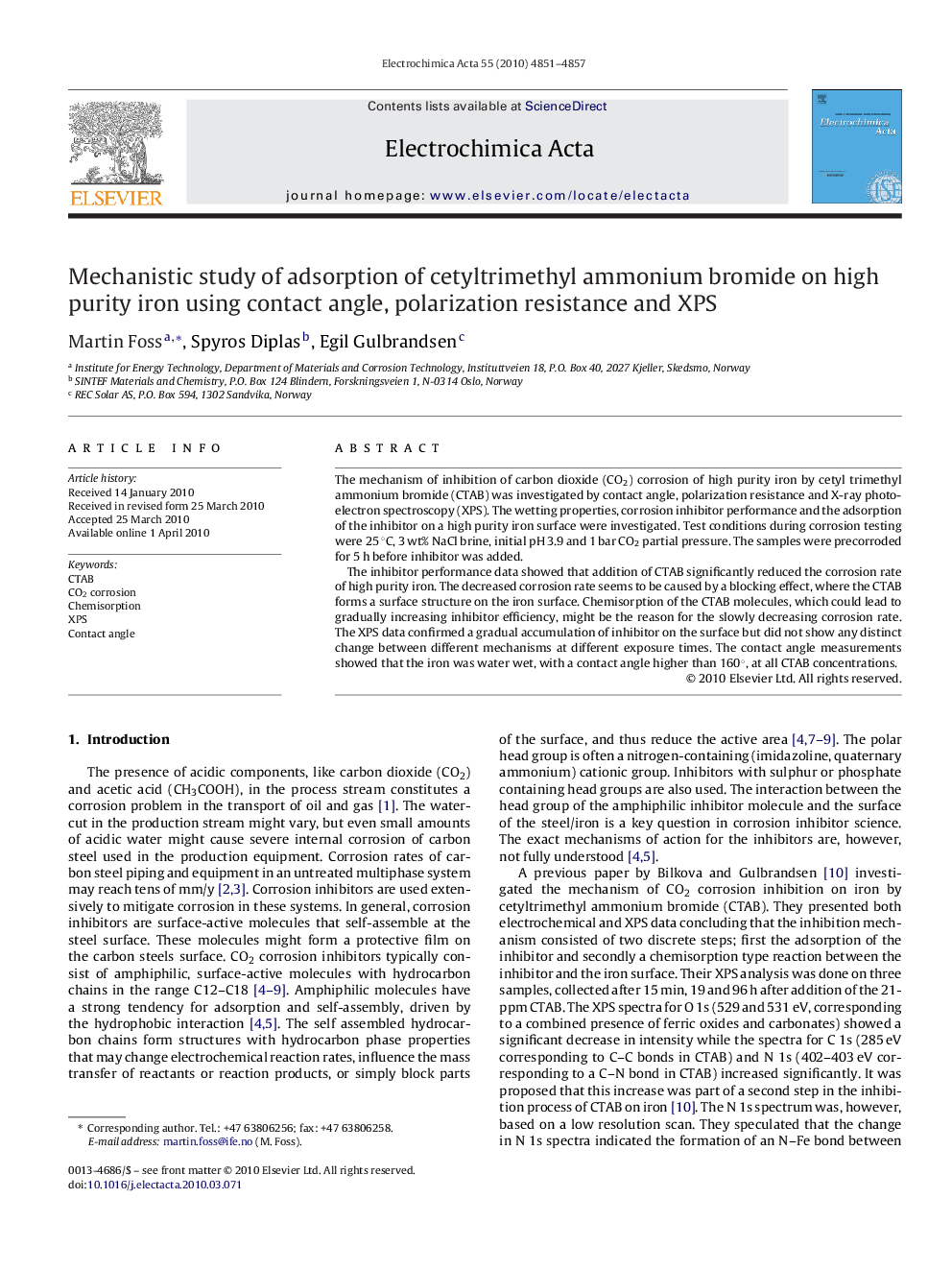| Article ID | Journal | Published Year | Pages | File Type |
|---|---|---|---|---|
| 190554 | Electrochimica Acta | 2010 | 7 Pages |
The mechanism of inhibition of carbon dioxide (CO2) corrosion of high purity iron by cetyl trimethyl ammonium bromide (CTAB) was investigated by contact angle, polarization resistance and X-ray photoelectron spectroscopy (XPS). The wetting properties, corrosion inhibitor performance and the adsorption of the inhibitor on a high purity iron surface were investigated. Test conditions during corrosion testing were 25 °C, 3 wt% NaCl brine, initial pH 3.9 and 1 bar CO2 partial pressure. The samples were precorroded for 5 h before inhibitor was added.The inhibitor performance data showed that addition of CTAB significantly reduced the corrosion rate of high purity iron. The decreased corrosion rate seems to be caused by a blocking effect, where the CTAB forms a surface structure on the iron surface. Chemisorption of the CTAB molecules, which could lead to gradually increasing inhibitor efficiency, might be the reason for the slowly decreasing corrosion rate. The XPS data confirmed a gradual accumulation of inhibitor on the surface but did not show any distinct change between different mechanisms at different exposure times. The contact angle measurements showed that the iron was water wet, with a contact angle higher than 160°, at all CTAB concentrations.
